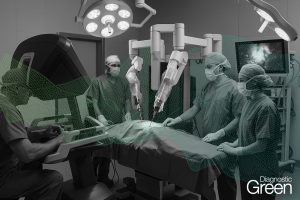The clinical efficacy of robot-assisted laparoscopic pericystectomy using the Da Vinci Xi surgical system plus indocyanine green(ICG) fluorescence imaging and the conventional laparotomy for en bloc pericystectomy was compared.
Methods: The clinical data of 7 patients treated by robot-assisted laparoscopic pericystectomy using the Da Vinci Xi surgical system plus ICG fluorescence imaging at our hospital between October 2019 and July 2021 and 15 patients treated by conventional laparotomy for en bloc pericystectomy were retrospectively analyzed.
Result: Compared with the conventional laparotomy group, the intraoperative blood loss was reduced using the Da Vinci surgical system [(225.43 ± 44.75)ml: (521.33 ± 246.34) ml, P = 0.015]. The indwelling time of the urinary catheter was also shorter [2.86 ± 0.75)d: (3.87 ± 0.81)d, P = 0.012]. However, the total expense was increased significantly [(49.9 ± 3.7) thousand RMB: (28.7 ± 5.0) thousand RMB, P < 0.001]. The two groups of patients were not significantly different in operation time, time to flatulence after surgery, time to eat a liquid diet after surgery, length of hospital stay after surgery, time to drainage tube removal, and the incidence of postoperative complications (P = 0.899). Both two groups were followed up for 3-12 months after surgery. The patients were generally good without recurrence or intra-abdominal implantation.
Conclusion: The Da Vinci Xi surgical system could be feasibly and safely applied to the robot-assisted laparoscopic pericystectomy plus ICG fluorescence imaging for Hepatic cystic echinococcosis(HCE). This procedure could effectively remove the hepatic hydatid cysts under the ICG fluorescence imaging with a higher resection rate, causing less trauma and fewer complications.




